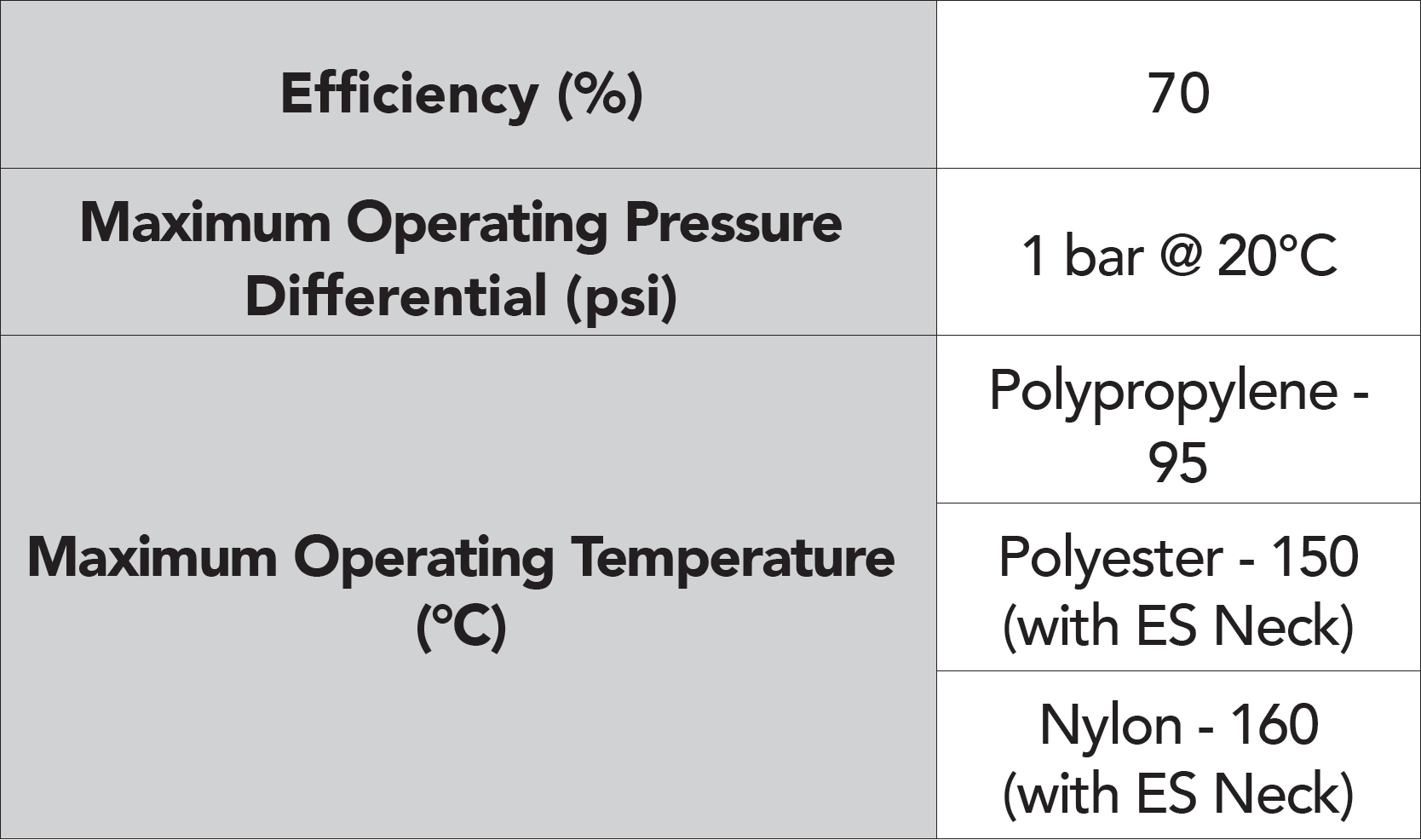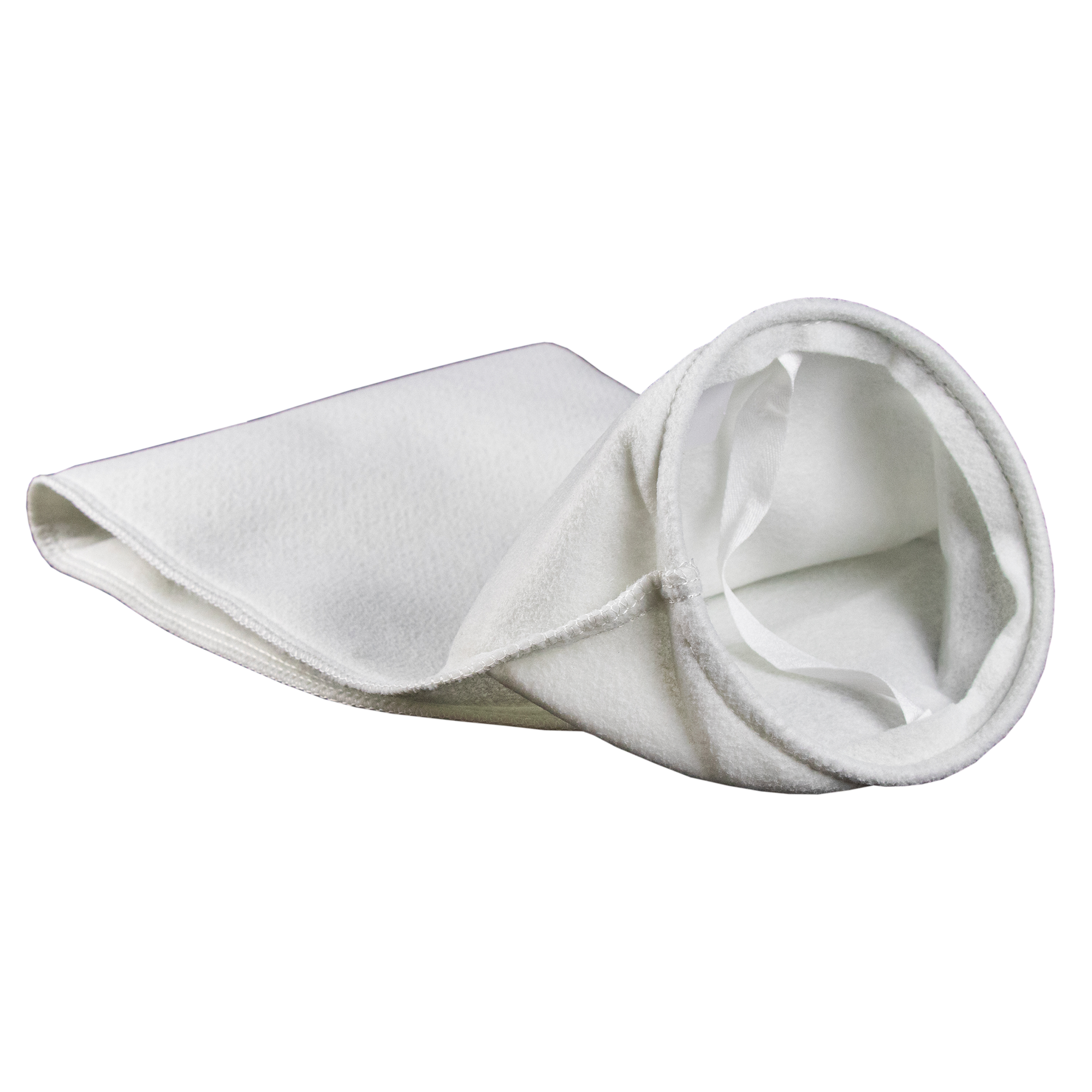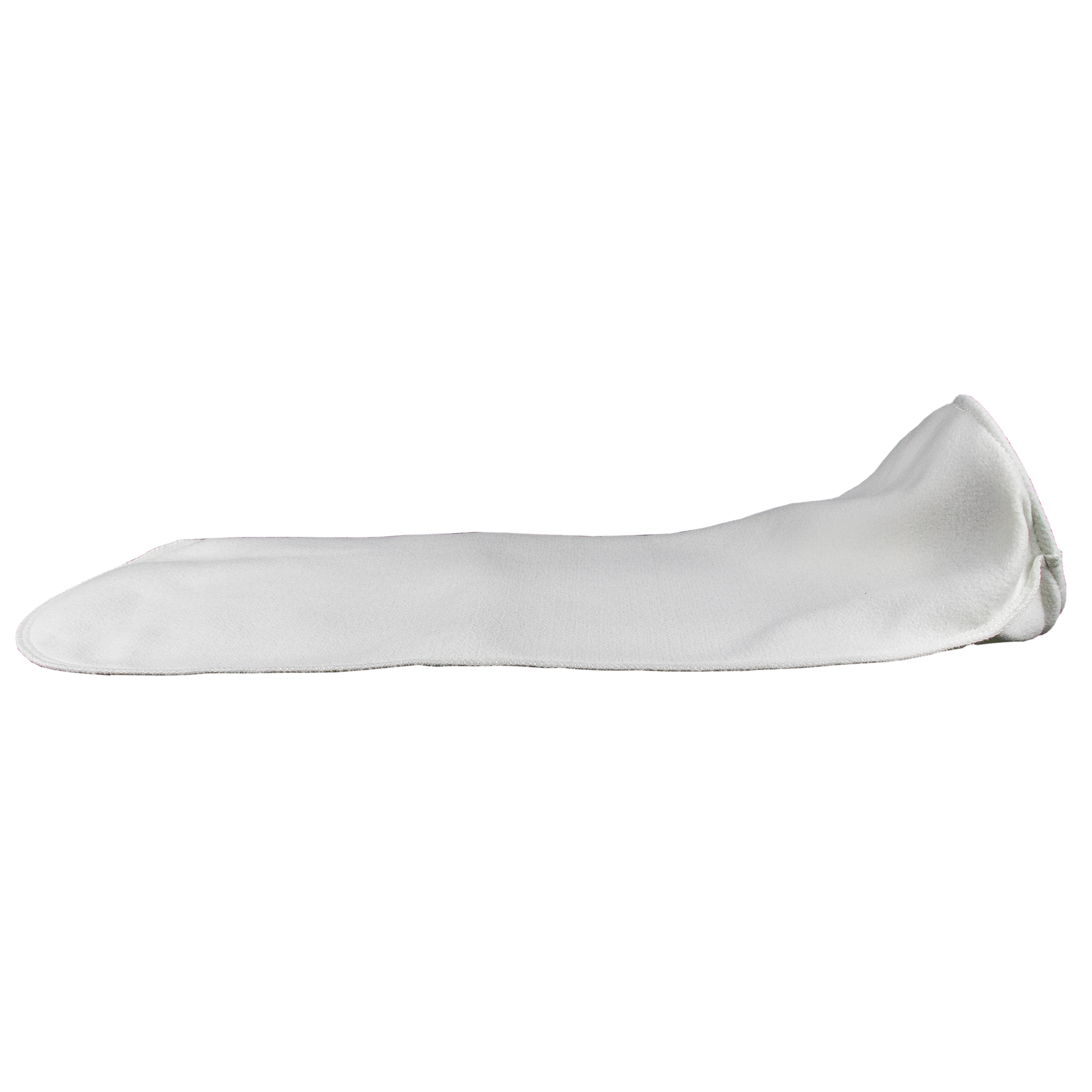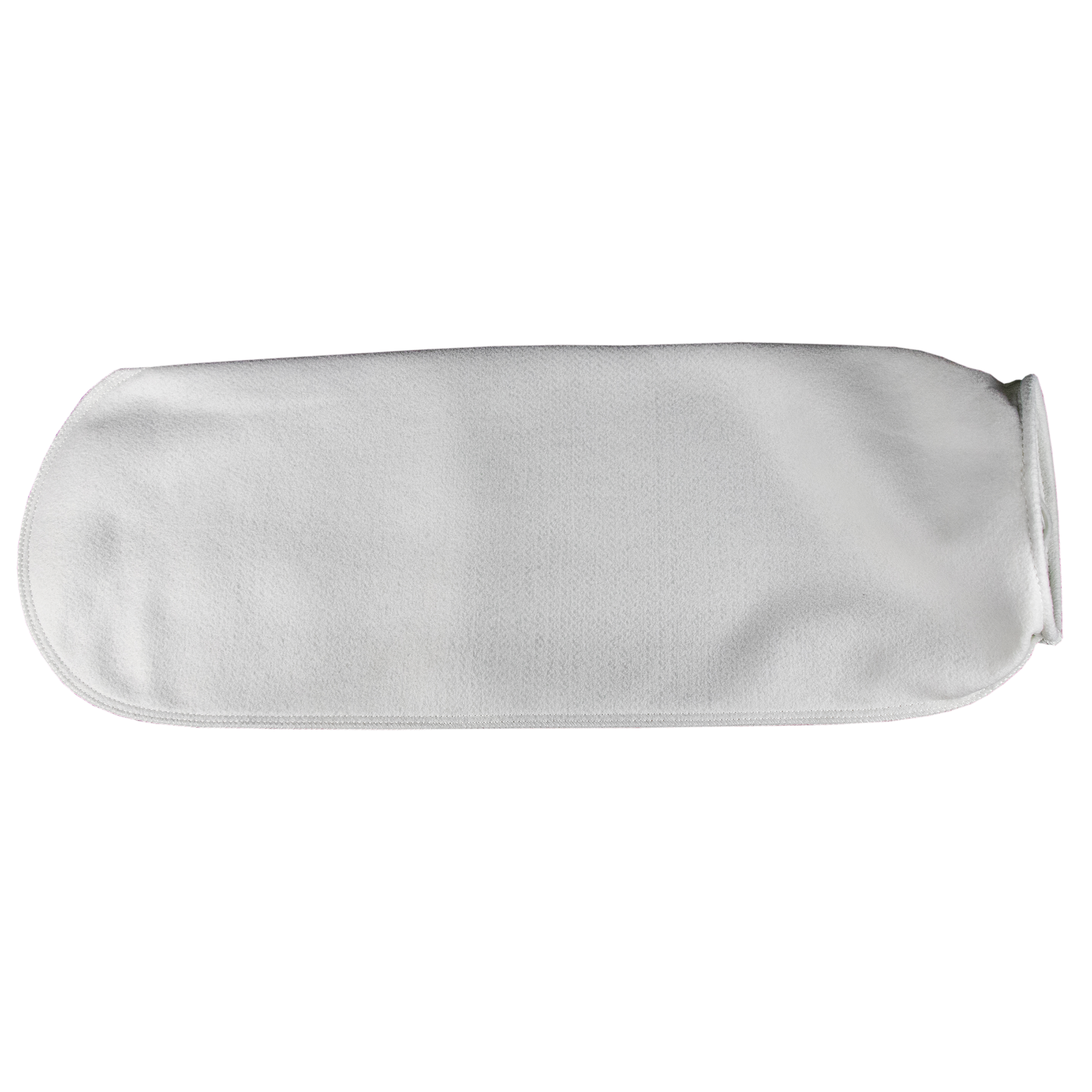Economic Bag Filters (EB)
- Heavy duty double stitching ensures particles will not pass through the filter bag
- A single fabric handle across the diameter of the neck aids easy removal
- Available in a wide range of material, size and micron options
- Where the application requires a more robust and compatible option, a stainless steel ring is available
- Polypropylene neck ring means economic bags can be recycled or disposed of by incineration
Monofilament Mesh – Nylon Applications
- De-greasing
- Coolant filtration
- Coarse filtration
- Paints and inks
- Trap filter
- Coatings and varnishes
Felt – Polypropylene or Polyester Applications
- Pre-filtration in water treatment
- Paints
- Syrup
- Recycled water filtration
- Trap filter
- Bulk chemical transfer


Features & Information
Single layer bag filtration: the SPECTRUM Economic Bag Filter offers the widest range of material and neck style options, offering great versatility in bulk solid removal applications.
FAQs - Economic Bag
The Economic Bag filter is a single-layer bag designed to provide a cost-effective filtration solution. It is available in sizes 1, 2, 3, and 4, and offers slightly reduced dirt holding capacity compared to the Standard and Premier bags. The Economic Bag provides versatility with multiple media options, such as polypropylene, polyester, and nylon, catering to various filtration needs.
For the same explanation of Standard and Premier Bags please visit their respective pages.
- Size 1 = 7″ x 16″
- Size 2 = 7″ x 32″
- Size 3 = 4″ x 8″
- Size 4 = 4″ x 14″
A type of liquid filtration system consisting of a flexible, porous bag-like container made of materials like nylon, polyester, or polypropylene. The bag is designed to capture and retain solid particles, contaminants, and impurities from liquids.
Bag filters work by passing the liquid through the porous surface of the bag, allowing clean liquid to pass through while trapping and holding the solid particles inside the bag. The retained particles build up over time, and when the bag reaches its filtration capacity, it is replaced with a new one.
Some advantages of using bag filters include:
- High Capacity: bag filters have a large filtration surface area, allowing them to handle substantial flow rates and retain a significant amount of solids.
- Cost-Effective: they generally have a lower initial cost, making them a cost-effective choice for applications with high flow rates and large volumes.
- Easy Installation: easy to install and replace, reducing downtime during maintenance.
- Versatility: available in various sizes and materials, suitable for a wide range of applications and liquids.
- Broad Particle Size Removal: bag filters can effectively remove particles ranging from coarse to fine depending on the filter media used, providing flexibility.


